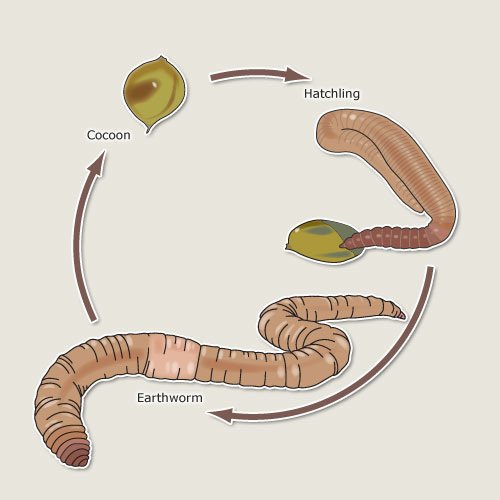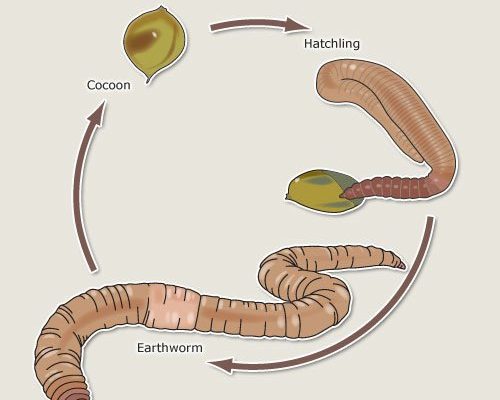
When we think about the lifecycle of these worms, it’s like following a story arc. Each stage has its own challenges and adaptations. So, let’s dive into the lifecycle of the wolf worm step by step, exploring how it evolves from an egg to a fully formed creature ready to face the world.
What Are Wolf Worms?
Before we jump into their lifecycle, it helps to know exactly what we’re dealing with. Wolf worms are actually the larvae of the **Cuterebra** flies, which are part of the bot fly family. They’re often found in wild areas, especially in North America. What really sets them apart is their parasitic lifestyle—meaning they have to invade another animal’s body to survive.
You might come across them in your backyard or while out in the woods. They typically target small mammals like rabbits, squirrels, and even some pets. It’s a bit like a game of hide-and-seek, where the wolf worm is the invader. They ensure their survival by developing inside their host, which is a pretty unique survival strategy in the animal kingdom.
By being so reliant on their hosts, wolf worms create a fascinating relationship. It’s not all cuddly and heartwarming, though. This relationship can lead to issues for the host animal, which raises the stakes in the lifecycle drama.
Stage 1: Egg Development
The lifecycle of a wolf worm starts with the egg. Female bot flies lay their eggs near the burrows or nests of their chosen hosts. Each female can lay hundreds of eggs at once, ensuring that at least a few will find their way to the right host. Think of it as an egg-laying explosion!
Once the eggs are laid, they need the warmth of a host to hatch. This is where the magic happens. When the host animal comes into contact with the eggs—often while grooming or resting—the heat from its body triggers the eggs to hatch. It’s almost like a tiny army of worms waiting for the perfect moment to spring into action.
This stage is crucial because the timing has to be just right. If the eggs are laid too early or too late, they may not hatch effectively, and that could mean disaster for the developing larvae. So, the bot fly has to be in sync with nature to ensure the survival of its offspring.
Stage 2: Larval Stage Inside the Host
Once the eggs hatch, the tiny larvae (or wolf worms) emerge and immediately burrow into the host’s skin. This is where it gets a bit gruesome. Think of them as little invaders, making themselves at home in a cozy environment. They create an opening in the skin, allowing them to breathe while they grow.
During this stage, wolf worms feed on the host’s tissue and fluids, growing larger over several weeks. It’s a critical time because they need a reliable source of food to develop properly. Here’s the thing: while they’re munching away, they can cause infections or other complications for their hosts.
The larvae are equipped with some fascinating adaptations. They have **spines** on their bodies to help anchor themselves inside the host and prevent being dislodged. It’s like they’re the ultimate squatters, making it difficult for the host to evict them.
Stage 3: Pupation
After a few weeks of growing, the wolf worm larvae reach their full size and are ready for the next stage: pupation. This is a bit like a caterpillar turning into a butterfly—though a lot creepier! The larvae create a breathing hole in the host’s skin and then drop out onto the ground.
Once on the ground, they wriggle and find a safe spot to pupate. Typically, they bury themselves in soil or leaf litter. This is where they undergo a major transformation. Inside their pupal case, they’re changing from larvae to adult bot flies, which takes a few weeks.
During this time, they might seem vulnerable, but they’re in their secret cocoon, preparing for emergence. It’s one of those periods where it feels like nothing is happening, but behind the scenes, a lot is going on!
Stage 4: Emergence as Adult Bot Flies
After the pupation phase, it’s showtime! The adult bot flies emerge, ready to take on the world. They break free from their pupal case, usually in late summer or early fall, and start searching for mates. After all, their primary goal is to continue the lifecycle.
Adult bot flies have a short lifespan, typically living only a few weeks. Their main focus is finding a mate and laying eggs to ensure the next generation. Interestingly, they don’t feed as adults. Instead, they rely on the nutrients they gathered during their larval stage.
This is their chance to make a mark in the world. Once they mate and lay eggs, the cycle starts all over again. It’s a beautiful yet eerie loop of life, showcasing the resilience of nature—even if it’s a bit unsettling.
Why Understanding the Wolf Worm Lifecycle Matters
You might wonder why learning about the wolf worm lifecycle is essential. For starters, understanding their lifecycle can help us grasp the larger picture of ecosystem health. These larvae play a role in controlling small mammal populations, indirectly influencing the balance of habitats.
Moreover, knowing about wolf worms can also be beneficial for pet owners. If you have pets that roam outdoors, being aware of these parasites can help you keep them safe and healthy. It’s all about being informed and proactive.
Lastly, studying creatures like wolf worms reminds us of the complexities of nature. Every organism, no matter how small, plays a part in the larger web of life. By appreciating these interconnected relationships, we can foster a greater respect for wildlife and our environment.
So there you have it! The lifecycle of the wolf worm—starting from a tiny egg to a fully formed bot fly—presents an extraordinary journey full of challenges, adaptations, and survival tactics. It’s both fascinating and a little unsettling, reminding us of the intricate dance of life in nature.
By understanding this lifecycle, we gain insight into how these unique creatures fit into our world. Whether you’re curious about wildlife, a pet owner, or just someone fascinated by nature, the story of the wolf worm offers something to ponder. Nature is complex, and every chapter—from egg to emergence—reveals a bit more of its mysteries.

